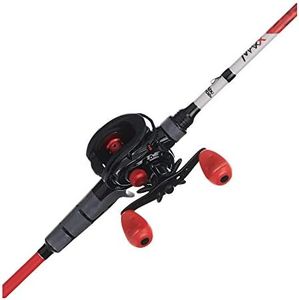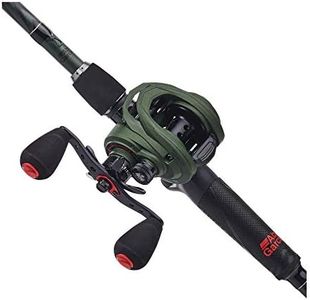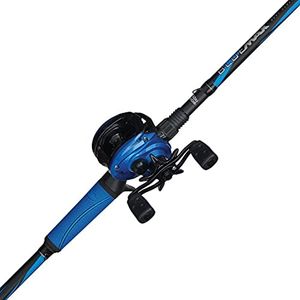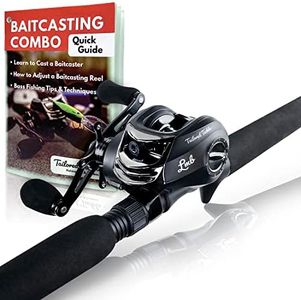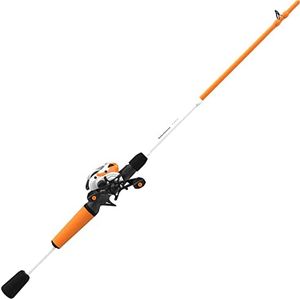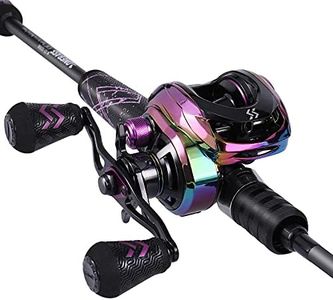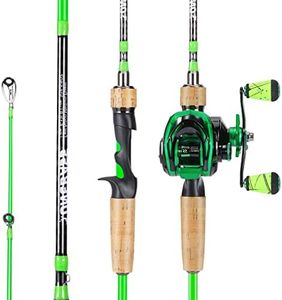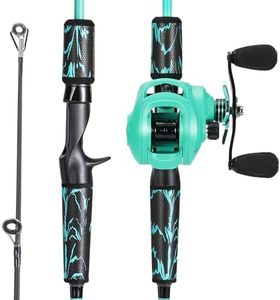We Use CookiesWe use cookies to enhance the security, performance,
functionality and for analytical and promotional activities. By continuing to browse this site you
are agreeing to our privacy policy
10 Best Baitcast Combos
From leading brands and best sellers available on the web.Buying Guide for the Best Baitcast Combos
Choosing the right baitcast combo, which is a matched baitcasting rod and reel set, can make fishing more efficient and enjoyable, especially if you’re targeting larger species or need more control over your casting. Understanding the key specs will help you match your gear to your fishing style and target fish, leading to fewer tangles, more accurate casts, and a better overall experience.Rod PowerRod power describes how much force it takes to bend the rod. It ranges from light to extra-heavy. Light and medium rods are best for smaller fish and lighter lures, while heavy rods are necessary for bigger fish and heavier lures. To choose correctly, think about what species you’ll fish for most often. If you’re after bass, medium or medium-heavy usually works well, but for larger fish like catfish, you’ll need a heavy power.
Rod ActionRod action refers to where the rod bends when pressure is applied. Fast action rods bend mostly at the tip, providing quick hooksets and sensitivity, which is great for single-hook lures. Moderate or slow action rods bend further down, offering more flexibility, which is useful for treble-hook lures or when you want to play the fish longer. Your lure choice and fishing technique should steer you here—fast action for precision and sensitive bites, slower actions for crankbaits and forgiving battles.
Rod LengthRod length affects casting distance and control. Short rods (around 6 feet or less) offer more control and are good for close-quarter fishing. Medium rods (between 6'6"–7'2") are versatile and work for most situations. Longer rods (above 7 feet) add casting distance and leverage when fighting fish. If you fish from a boat with tight spaces, go shorter; for bank fishing or long casts, look longer.
Gear RatioGear ratio tells you how many times the spool turns for each turn of the reel handle. Lower gear ratios (like 5:1) are slower and give you more power, great for deep crankbaits or pulling heavy fish. Higher gear ratios (like 7:1 or above) retrieve line faster, ideal for top water lures or quick presentations. If you fish a variety of techniques, a medium gear ratio is the safest bet.
Line CapacityLine capacity tells you how much fishing line the reel can hold. This matters if you’re catching fish that make long runs or if you use heavier line. For smaller, local species, lower capacity is fine, but for bigger fish or saltwater use, make sure your combo holds enough line.
Brake SystemBaitcast reels have braking systems to prevent backlash (when the spool spins faster than the line can leave, creating tangles). There are magnetic, centrifugal, and dual systems. Magnetic systems are easy to adjust on the fly, while centrifugal brakes need internal adjustments but allow more fine-tuning. Beginners benefit from combos with user-friendly and adjustable brakes to minimize tangles while learning.
Handle Type and ComfortHandle material (cork or EVA foam) and shape can affect comfort during use. Cork feels warmer and may be more comfortable for longer trips, while EVA handles are durable and handle wet conditions well. Pick a grip that feels best in your hand and won’t cause fatigue during longer fishing sessions.

